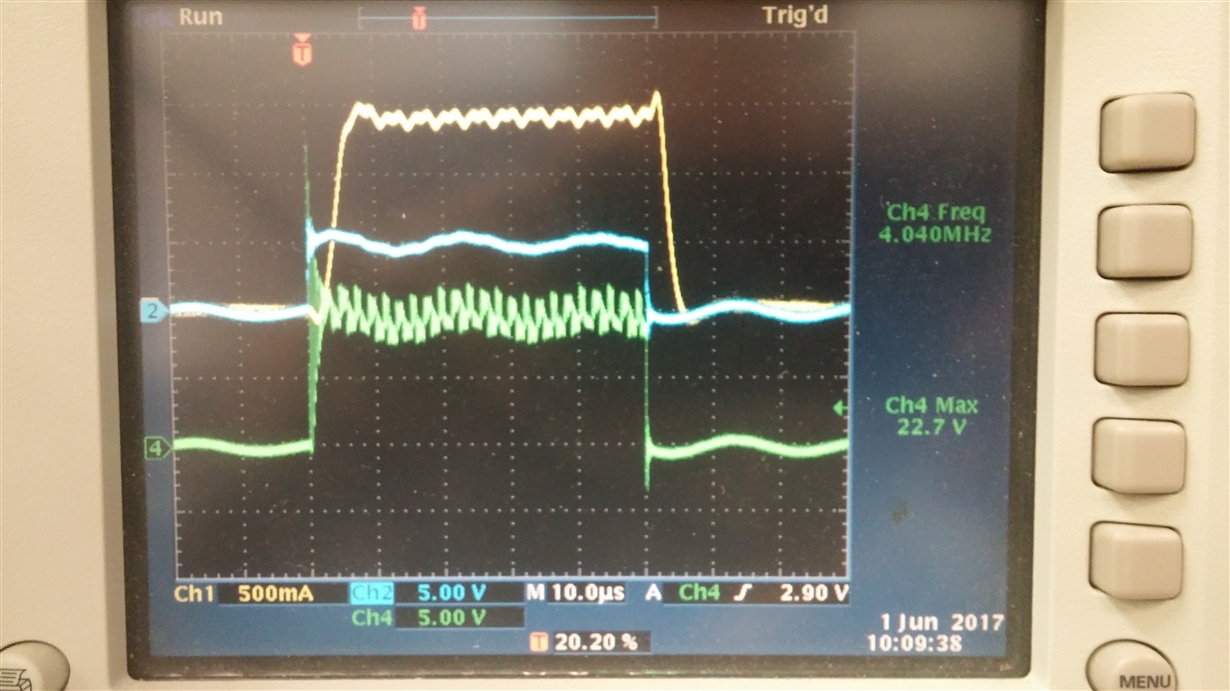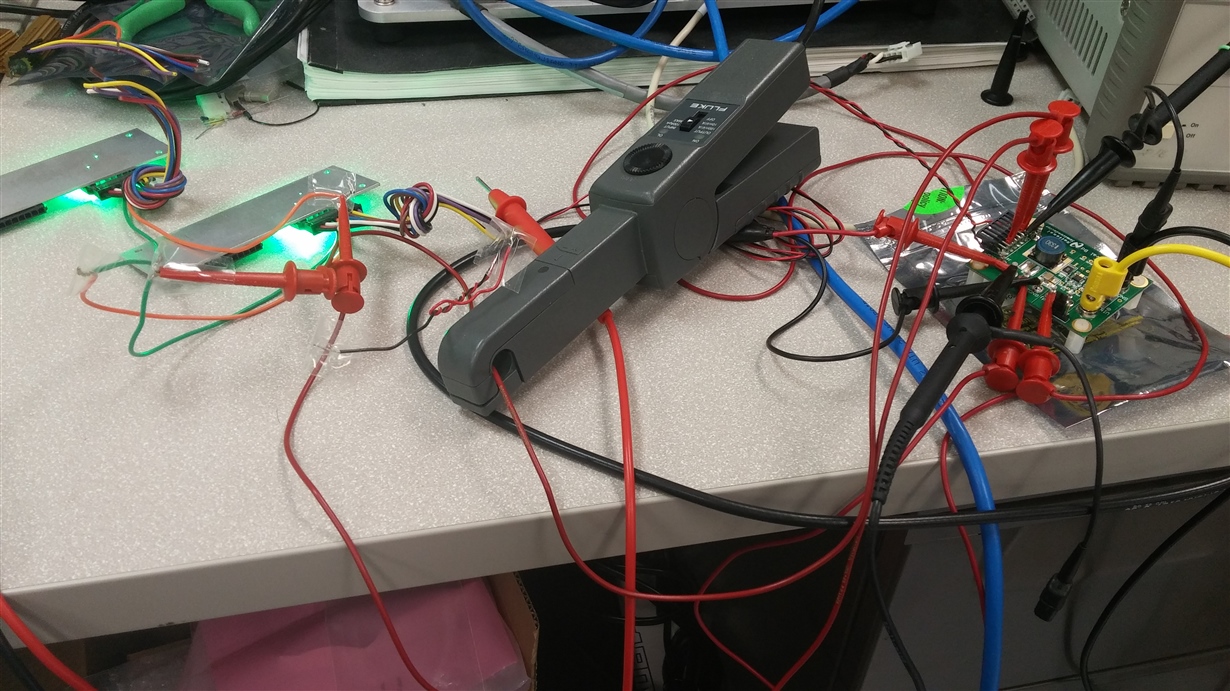Hi
Using the LM3409HV eval board to power 4 LEDs in a string (planning go up to 6 LEDs with up to 2A drive current). Vin power supply is 24V. 5V on 5V. VADJ is from an external adjustable supply from 0 to 1.5V. And 10 kHz 50% duty square wave 5V signal on PWM2.
No modification done on the board yet. The board comes with the shunt diming option.
The 5us delay is from the rising edge of PWM2 to LED current reaches the high level. And ringing on VLED+ was seen during this delay time. However, about the same 5us delay was seen when LEDs were switched off. The 5us delay is from the falling edge of PWM2 to LED current goes back to almost zero. Fig. 8 in the user's guide shows very small delay (<<0.5us). The screen capture shows the signals (Yellow: LED current, Blue: PWM2 Green: VLED+). Also a picture of the setup.
A few things tried to isolate the problem. (1) varied the LED current from zero to max by VADJ, the delay did not change. (2) the wires connecting to the LEDs was changed from ~3 feet to ~1 foot in length, the delay did not show noticeable change. Seems like some RC or LC time constant controls the delay.
I thought It might be related to the optional parts in Fig. 5. But the switching off should be only related to the speed of Q3 per datasheet page 17.
Thank you!
FZ



